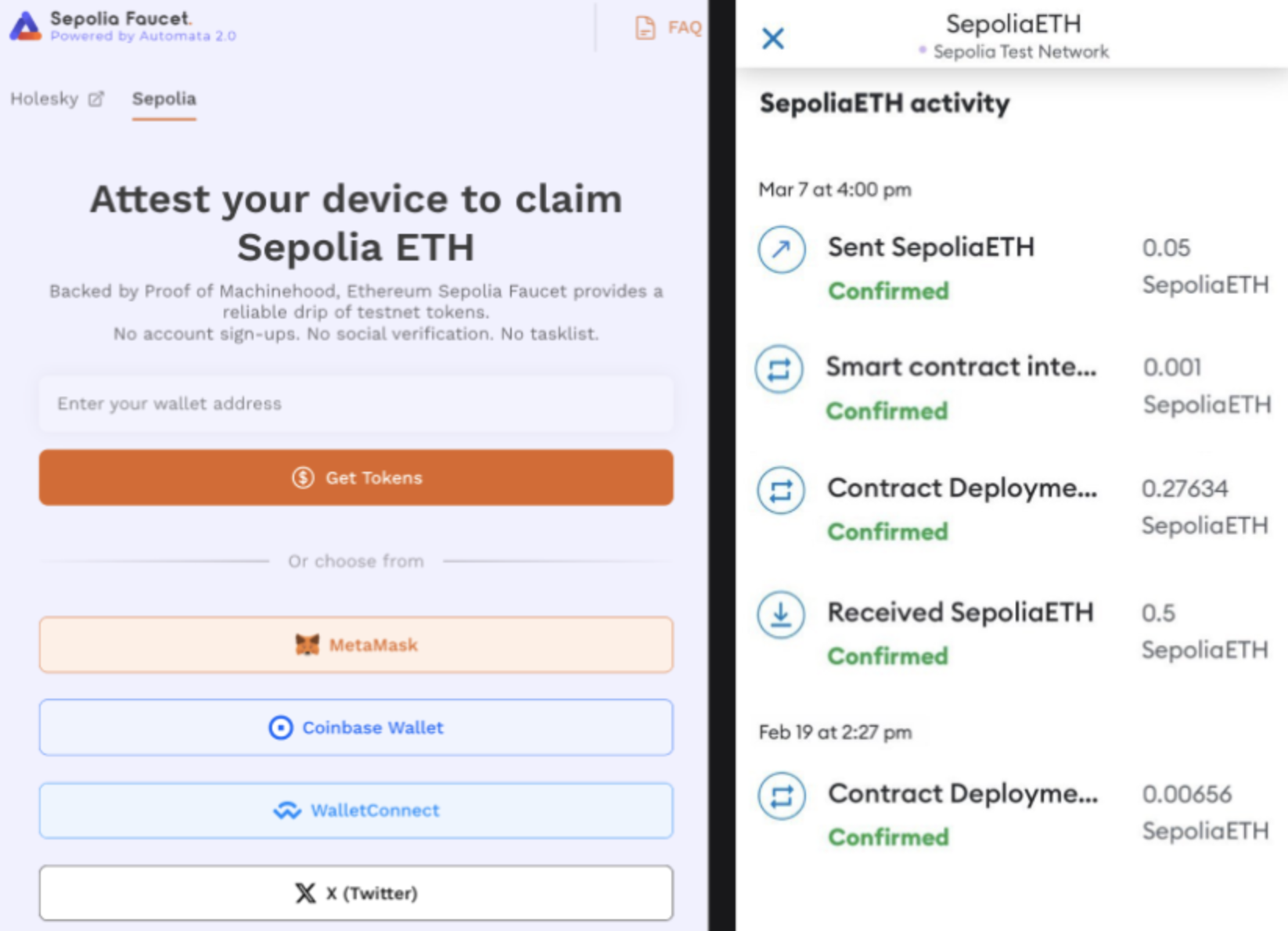As developers embark on the journey of creating decentralized applications (dApps), they face numerous challenges, especially in the initial stages of development.
One essential requirement in this process is access to testnet environments crucial for testing and refining dApp functionalities. Enter faucet tokens—a pivotal resource enabling developers to kickstart development at no cost.
Discover how developers can begin building and testing their applications using crypto nodes from infrastructure providers and the assistance of testnet faucets.
Understanding Testnet Faucets
A testnet faucet is an online platform that distributes test network cryptocurrencies to users for free.
These cryptocurrencies, often referred to as test tokens, emulate the functionality of their real-world counterparts like ETH or BTC but lack any monetary value. By using these tokens, developers can interact with test networks without the need to use real funds.
For instance, SepoliaETH mirrors the characteristics and functionalities of actual Ether but is solely intended for use on the designated test network.
Faucets are typically funded by developers, cryptocurrency foundations, or community members who believe in the importance of supporting blockchain development.
Testnet Token Utility
This mechanism of free token distribution caters primarily to blockchain developers. It is a convenient means of acquiring resources for launching dApps and testing a code without the need to mine or purchase crypto and risk launching directly on the mainnet.
Additionally, researchers, educators, and new crypto users may also utilize faucets to explore blockchain technology without financial risk.
It’s important to note that while test coins allow developers to build and run their applications, they cannot be traded for real money or used on the main blockchain network.
How to Test a dApp
Imagine Bob is starting the development of a decentralized finance (DeFi) application. In the early stages, he needs access to the testnet environment to simulate transactions and interactions within a dApp.
Before developers can begin using testnet faucet tokens, it’s crucial to establish a connection to test blockchain networks.
This implies communicating with crypto nodes that replicate the infrastructure of the main blockchain, allowing users to validate transactions, deploy contracts, and observe their behavior without risking real assets.
Let’s now break it down in more detail.
Step 1: Connecting to Test Network Nodes
There are various providers offering access to testnet chain nodes. GetBlock, one of the prominent Web3 infrastructure services, maintains over 55 blockchain protocol nodes, including both mainnet and test networks.
Below is a simple tutorial on how to set up the connectivity to crypto nodes via a provider:
- Visit the GetBlock website and sign up for an account connecting with a MetaMask wallet.
- Navigate to your account to select the desired network and obtain endpoint URLs;
- Utilizing the programming language of your choice, integrate the acquired API into your development environment. Follow the documentation provided by GetBlock to establish a connection to the desired network.
As an added convenience, GetBlock’s free package supplying 40,000 daily requests proves sufficient for testing decentralized applications without incurring any additional costs.
Step 2: Charging a Wallet with Test Assets
The next step is researching and identifying reputable faucets that support the blockchain network you’re developing on.
To facilitate this process, GetBlock provides a convenient list of every popular and reliable testnet faucet developers may require.
Faucets operate on a simple premise: users visit the website, provide their wallet address, and receive a specified amount of test coins. Some platforms may include additional tasks, designed to prevent abuse and verify users’ genuine interest in testing blockchain applications.
Received coins can be used to make transactions and pay fees for deploying smart contracts and interacting with them.
With these resources, Bob can test various functionalities of his DeFi application as if it was on the mainnet, such as lending, borrowing, and yield farming, without risking real assets or impacting the main network.
Summing up
By providing access to free coins, testnet faucets empower developers to iterate rapidly, debug their code, and gain hands-on experience with various blockchain protocols.
In combination with crypto nodes, they open access to a sandbox environment and facilitate the experimenting and refining of various blockchain-based solutions before deploying them on the live network.
This notice states that the information provided is not an offer or solicitation to buy or sell securities, and its accuracy or completeness is not guaranteed. The authors may own the discussed cryptocurrency. The content, which is subject to change, is for informational purposes only and should not be considered investment, tax, legal, or accounting advice. Readers are advised to consult professional advisors before any transaction. Visionary Financial does not endorse the content and was compensated for this sponsored article. Please review their privacy policy, disclaimer, and terms and conditions for more details.


